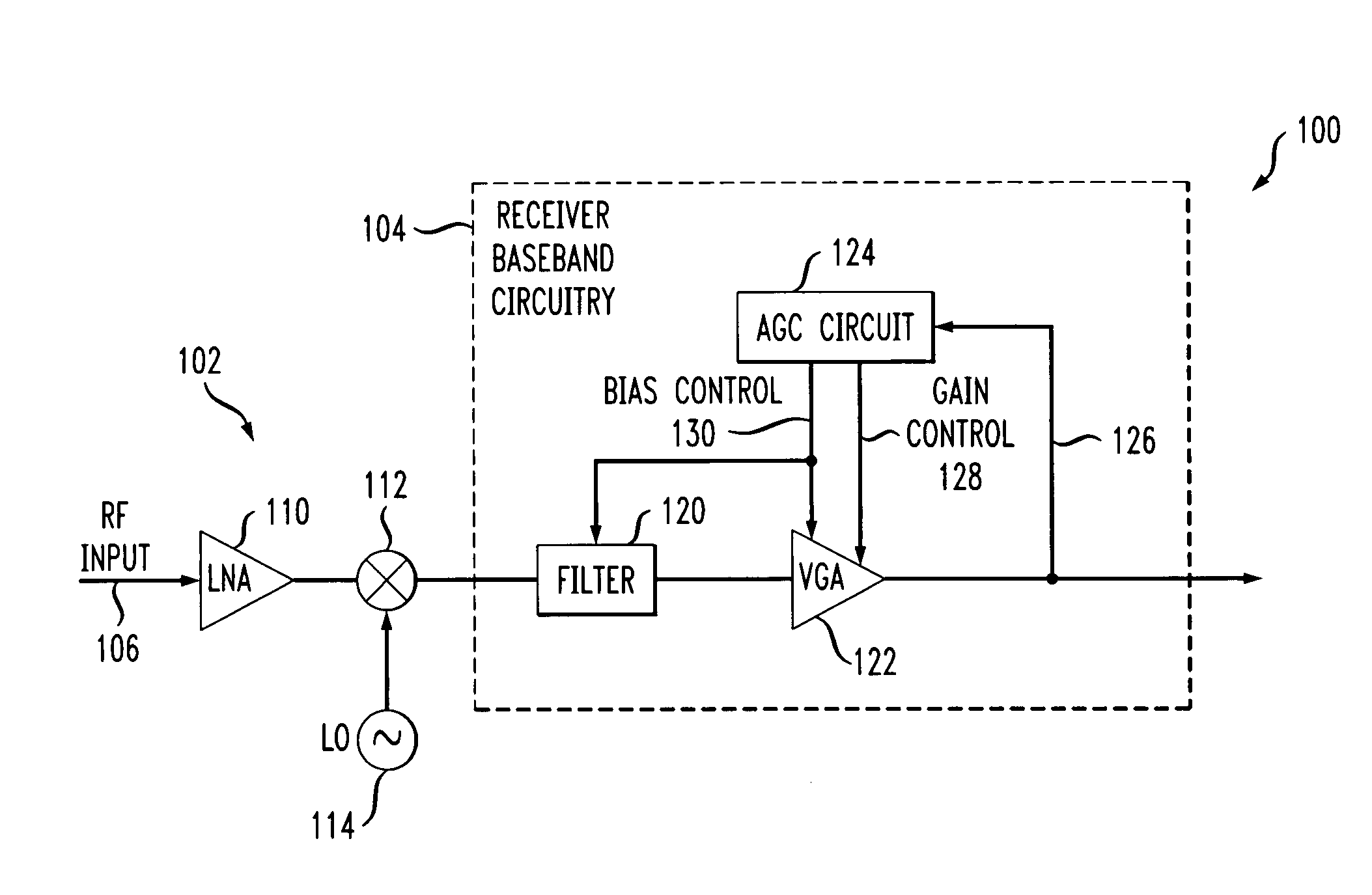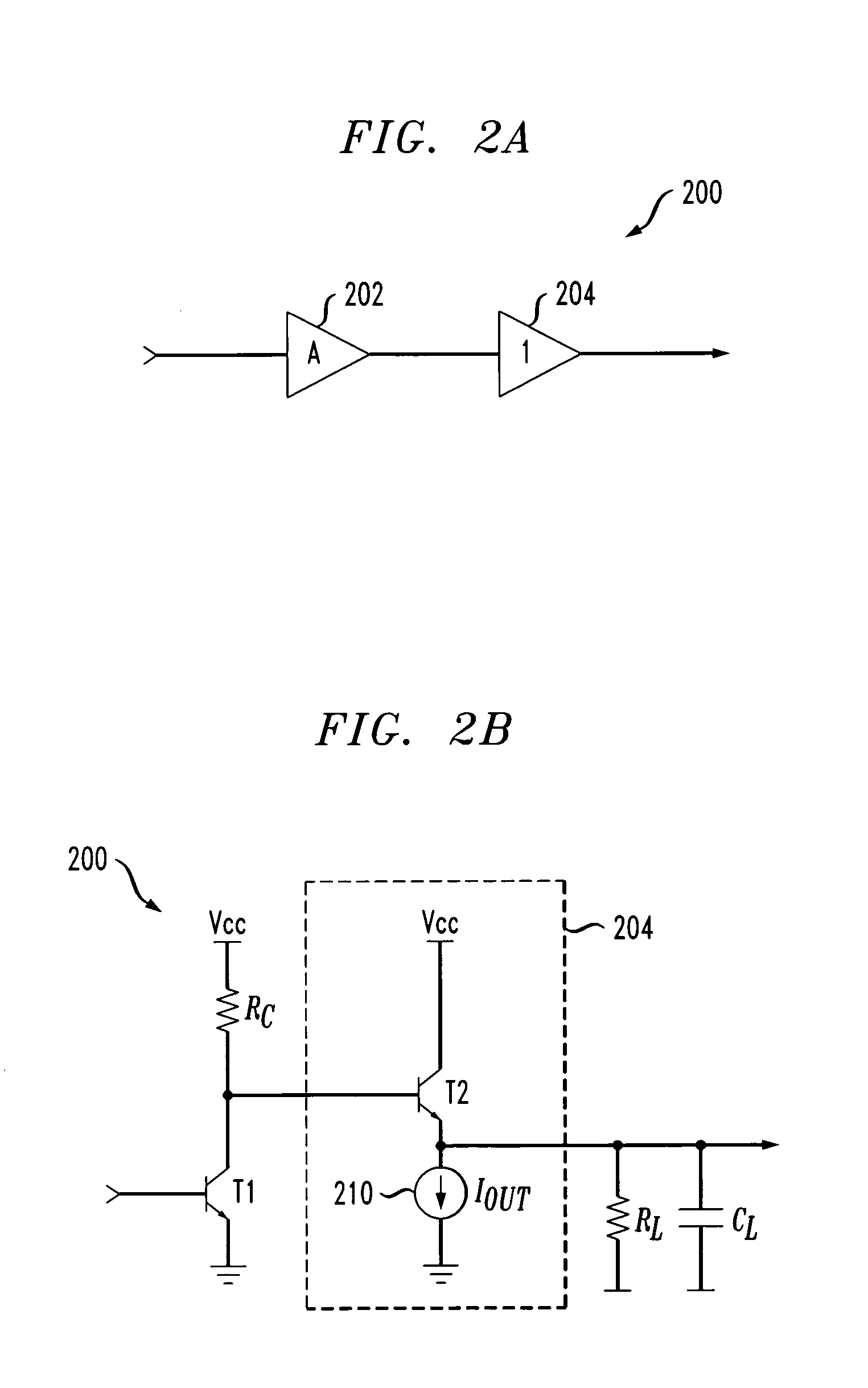Method and apparatus for dynamic biasing of baseband circuitry in a communication system receiver
a communication system and circuitry technology, applied in low-noise amplifiers, digital transmission, substation equipment, etc., can solve the problems of circuitry consuming an unduly high amount of power, certain amount of power consumption, and power consumption of the receiver baseband circuitry, so as to improve the control of baseband circuitry bias and reduce power consumption in the communication system
- Summary
- Abstract
- Description
- Claims
- Application Information
AI Technical Summary
Benefits of technology
Problems solved by technology
Method used
Image
Examples
Embodiment Construction
[0017]The present invention will be illustrated herein in an example receiver having a particular configuration of receiver baseband circuitry. It is to be appreciated, however, that the invention does not require the particular receiver and baseband circuitry configurations of the illustrative embodiments. The invention is more generally suitable for use in any communication receiver application in which it is desirable to provide improved power consumption through dynamic biasing of baseband circuitry. More particularly, the invention can be adapted for utilization in a wide variety of communication system receivers, including, for example, receivers associated with wireless networks such as IEEE 802.11 networks, digital audio broadcasting (DAB) systems, wireline systems such as digital subscriber line (DSL) systems, optical communication systems, etc. The term “receiver” as used herein is intended to encompass these and other communication system receivers. Moreover, the present ...
PUM
 Login to View More
Login to View More Abstract
Description
Claims
Application Information
 Login to View More
Login to View More - R&D
- Intellectual Property
- Life Sciences
- Materials
- Tech Scout
- Unparalleled Data Quality
- Higher Quality Content
- 60% Fewer Hallucinations
Browse by: Latest US Patents, China's latest patents, Technical Efficacy Thesaurus, Application Domain, Technology Topic, Popular Technical Reports.
© 2025 PatSnap. All rights reserved.Legal|Privacy policy|Modern Slavery Act Transparency Statement|Sitemap|About US| Contact US: help@patsnap.com



